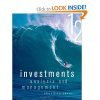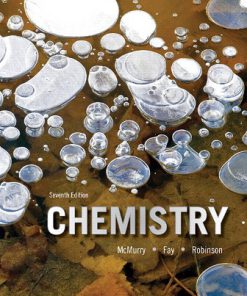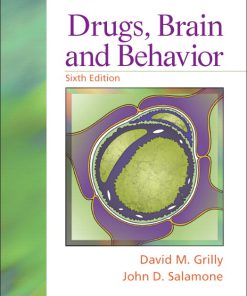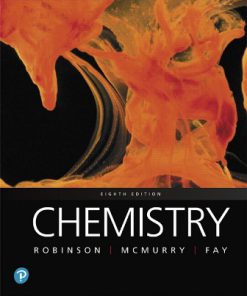Test Bank for Chemistry and Chemical Reactivity, 10th Edition, John C. Kotz, Paul M. Treichel, John R. Townsend David Treichel
$55.00 Original price was: $55.00.$29.99Current price is: $29.99.
Test Bank for Chemistry and Chemical Reactivity, 10th Edition, John C. Kotz, Paul M. Treichel, John R. Townsend, David Treichel,
This is completed downloadable of Test Bank for Chemistry and Chemical Reactivity, 10th Edition, John C. Kotz, Paul M. Treichel, John R. Townsend David Treichel
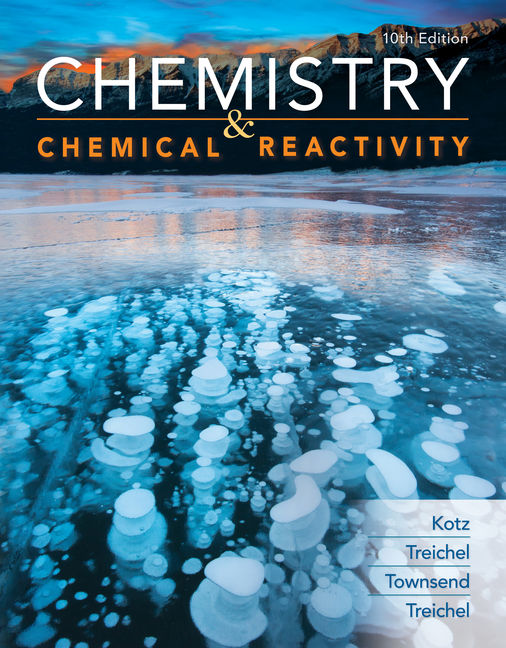
Product Details:
- ISBN-10 : 1337399078
- ISBN-13 : 978-1337399074
- Author: John C. Kotz, Paul M. Treichel, John R. Townsend, David Treichel
Succeed in chemistry with the clear explanations, problem-solving strategies, and dynamic study tools of CHEMISTRY & CHEMICAL REACTIVITY. Thorough instruction helps you develop a deeper understanding of general chemistry concepts through an emphasis on the visual nature of chemistry and the close interrelationship of the macroscopic, symbolic, and particulate levels of chemistry. The art program illustrates each of these levels in engaging detail.. Interactive study aids in OWLv2, such as Interactive Examples and Adaptive Learning Activities, help you master concepts.
Table of Contents
PART I: THE BASIC TOOLS OF CHEMISTRY.
1. Basic Concepts of Chemistry.
Let’s Review: The Tools of Quantitative Chemistry.
2. Atoms, Molecules, and Ions.
3. Chemical Reactions.
4. Stoichiometry: Quantitative Information about Chemical Reactions.
5. Principles of Chemical Reactivity: Energy and Chemical Reactions.
PART II: ATOMS AND MOLECULES.
6. The Structure of Atoms.
7. The Structure of Atoms and Periodic Trends.
8. Bonding and Molecular Structure.
9. Bonding and Molecular Structure – Orbital Hybridization and Molecular Orbitals.
PART III: STATES OF MATTER
10. Gases and Their Properties.
11. Intermolecular Forces and Liquids.
12. The Solid State.
13. Solutions and Their Behavior.
PART IV: THE CONTROL OF CHEMICAL REACTIONS.
14. Chemical Kinetics: The Rates of Chemical Reactions.
15. Principles of Chemical Reactivity: Equilibria.
16. Principles of Chemical Reactivity: The Chemistry of Acids and Bases.
17. Principles of Chemical Reactivity: Other Aspects of Aqueous Equilibria.
18. Principles of Chemical Reactivity: Entropy and Free Energy.
19. Principles of Chemical Reactivity: Electron Transfer Reactions.
PART V: THE CHEMISTRY OF THE ELEMENTS.
20. Environmental Chemistry: Earth’s Environment, Energy, and Sustainability.
21. The Chemistry of the Main Group Elements.
22. The Chemistry of the Transition Elements.
23. Carbon: Not Just Another Element.
24. Biochemistry.
25. Nuclear Chemistry.
Appendix A: Using Logarithms and Solving Quadratic Equations.
Appendix B: Some Important Physical Concepts.
Appendix C: Abbreviations and Useful Conversion Factors.
Appendix D: Physical Constants.
Appendix E: A Brief Guide to Naming Organic Compounds.
Appendix F: Values for the Ionization Energies and Electron Attachment Enthalpies of the Elements.
Appendix G: Vapor Pressure of Water at Various Temperatures.
Appendix H: Ionization Constants for Aqueous Weak Acids at 25ºC.
Appendix I: Ionization Constants for Aqueous Weak Bases at 25ºC.
Appendix J: Solubility Product Constants for Some Inorganic Compounds at 25ºC.
Appendix K: Formation Constants for Some Complex Ions in Aqueous Solution at 25°C.
Appendix L: Selected Thermodynamic Values.
Appendix M: Standard Reduction Potentials in Aqueous Solution at 25ºC.
Appendix N: Answers to Check Your Understanding Questions, Applying Chemical Principles Questions, and Selected Study Questions.
People Also Search:
chemistry and chemical reactivity 10th edition pdf free
chemistry and chemical reactivity 10th edition solution manual pdf free
what element is the most chemically reactive
chemistry and chemical reactivity 10th edition
You may also like…
Test Bank
Test Bank for Chemistry, 8th Edition, Jill Kirsten Robinson, John E. McMurry, Robert C. Fay
Test Bank
Test Bank for (Chapter 1 – 26) Options Futures and Other Derivatives 10th Edition John C. Hull
Solution Manual


